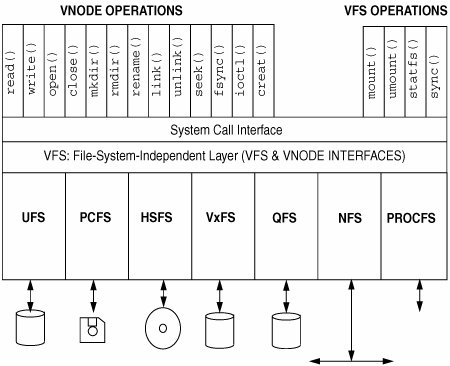Section 1.8. Files and File Systems
1.8. Files and File SystemsSolaris provides a framework under which multiple file system types are implemented: the virtual file system framework (VFS). Earlier implementations of UNIX used a single file system type for all mounted file systems; typically, the UFS file system from BSD UNIX. The virtual file system framework, developed to enable the network file system (NFS) to coexist with the UFS file system in SunOS 2.0, became a standard part of System V in SVR4 and Solaris OS. Each file system provides file abstractions in the standard hierarchical manner with file access interfaces even if the underlying file system implementation varies. The file system framework allows almost any objects to be abstracted as files and file systems. Some file systems store file data on storage-based media, whereas other implementations abstract objects other than storage as files. For example, the procfs file system abstracts the process tree, where each file in the file system represents a process in the process tree. We can categorize Solaris file systems into the following groups:
The framework provides a single set of well-defined interfaces that are file system independent; the implementation details of each file system are hidden behind these interfaces. Two key objects represent these interfaces: the virtual file, or vnode, and the virtual file system, or vfs objects. The vnode interfaces implement file-related functions, and the vfs interfaces implement file system management functions. The vnode and vfs interfaces call appropriate file system functions depending on the type of file system being operated on. Figure 1.5 shows the file system layers. File-related functions are initiated through a system call or from another kernel subsystem and are directed to the appropriate file system via the vnode/vfs layer. Figure 1.5. VFS/Vnode Architecture Table 1.1 summarizes some of the major file system types that are implemented in Solaris.
|
EAN: 2147483647
Pages: 244
